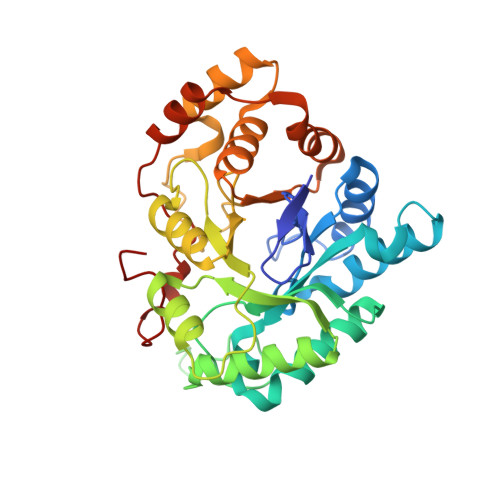Probing the inhibitor selectivity pocket of human 20 alpha-hydroxysteroid dehydrogenase (AKR1C1) with X-ray crystallography and site-directed mutagenesis
El-Kabbani, O., Dhagat, U., Soda, M., Endo, S., Matsunaga, T., Hara, A.(2011) Bioorg Med Chem Lett 21: 2564-2567
- PubMed: 21414777
- DOI: https://doi.org/10.1016/j.bmcl.2011.01.076
- Primary Citation of Related Structures:
3NTY - PubMed Abstract:
Human 20¦Á-hydroxysteroid dehydrogenase (AKR1C1) is an important drug target due to its role in the development of lung and endometrial cancers, premature birth and neuronal disorders. We report the crystal structure of AKR1C1 complexed with the first structure-based designed inhibitor 3-chloro-5-phenylsalicylic acid (K(i)=0.86 nM) bound in the active site. The binding of 3-chloro-5-phenylsalicylic acid to AKR1C1 resulted in a conformational change in the side chain of Phe311 to accommodate the bulky phenyl ring substituent at the 5-position of the inhibitor. The contributions of the nonconserved residues Leu54, Leu306, Leu308 and Phe311 to the binding were further investigated by site-directed mutagenesis, and the effects of the mutations on the K(i) value were determined. The Leu54Val and Leu306Ala mutations resulted in 6- and 81-fold increases, respectively, in K(i) values compared to the wild-type enzyme, while the remaining mutations had little or no effects.
Organizational Affiliation:
Medicinal Chemistry and Drug Action, Monash Institute of Pharmaceutical Sciences, Monash University, 381 Royal Parade, Parkville, Victoria 3052, Australia. ossama.el-kabbani@monash.au



















